Catalogue > List by artist
Browse the entire list of Rencontre Internationales artists since 2004. Use the alphabetical filter to refine your search. update in progress
Phillip Warnell
Catalogue : 2021Intimate Distances | Experimental doc. | 4k | color | 61:0 | United Kingdom, USA | 2020
Phillip Warnell
Intimate Distances
Experimental doc. | 4k | color | 61:0 | United Kingdom, USA | 2020
On a street corner in Queens, New York, an elderly, white-haired woman hovers, apparently waiting or looking for something – then starts approaching passersby. Miked up close, but viewed – surveillance-style – from distant rooftops, she asks them philosophical questions about turning points in their lives, sometimes eliciting candidly revealing answers from people who seemingly need to talk. She’s also seen up close at street level, viewed by a shaky nearby camera. And intermittently we hear the affectless voiceover of an English male reading an account of a prison spell. What exactly are we seeing? A documentary of sorts? A fiction stripped of its expected signposts? The woman is real-life casting director Martha Wollner, but the film never makes it clear what her mission is, what she hopes to learn, and what her relation is to the distant speaker (who may also be the distant observer). Echoing Coppola’s THE CONVERSATION, as well as works by Phillip Warnell’s fellow British experimental directors John Smith and Chris Petit, this is an enigmatic, elusive piece. Yet, as the title suggests, those moments when Wollner connects with the interiority of perfect strangers makes this an alluringly, unexpectedly compassionate guerrilla foray into urban experience. (Jonathan Romney)
Phillip Warnell is an artist-filmmaker, a writer, and the director of the Visible Institute, for research in film and photography, at Kingston University, London. He produces film works and texts exploring a range of philosophical and poetic thematics, also exploring ideas on human-animal relations. His most recent film, The Flying Proletarian (2017), premiered at CPH:DOX, Copenhagen International Documentary Film Festival, in March 2017. During his fellowship, Warnell is addressing a series of interconnected questions on “animality-cinemality-criminality,” involving engagement with film professionals and researchers relative to screen-based roles and exploring the relationship among appearance, measurement, and typecasting. He is also developing script-based ideas for a planned feature-length film, currently in development, that investigates ideas on misobservation and apparitions of other life-worlds, accessing archival material to inform and incorporate into the project. Warnell’s film work has been exhibited extensively, including recent screenings at the ICA in London, KW Institute for Contemporary Art, in Berlin, and Tate Modern, in London, as well as in such prestigious film festivals as the Locarno Festival, the New York Film Festival, and the Viennale. Previous exhibitions have included at the Moderna galerija, in Ljubljana, Slovenia; Sharjah Biennial, in United Arab Emirates; and Wellcome Collection, in London. His film Ming of Harlem: Twenty One Storeys in the Air (2014) won the 2014 Georges de Beauregard International Prize at FID International Film Festival Marseille and the 2015 Universities SIC Award at IndieLisboa.
Catalogue : 2015Ming of Harlem: Twenty One Storeys in the Air | Documentary | | color | 70:0 | United Kingdom | 2014
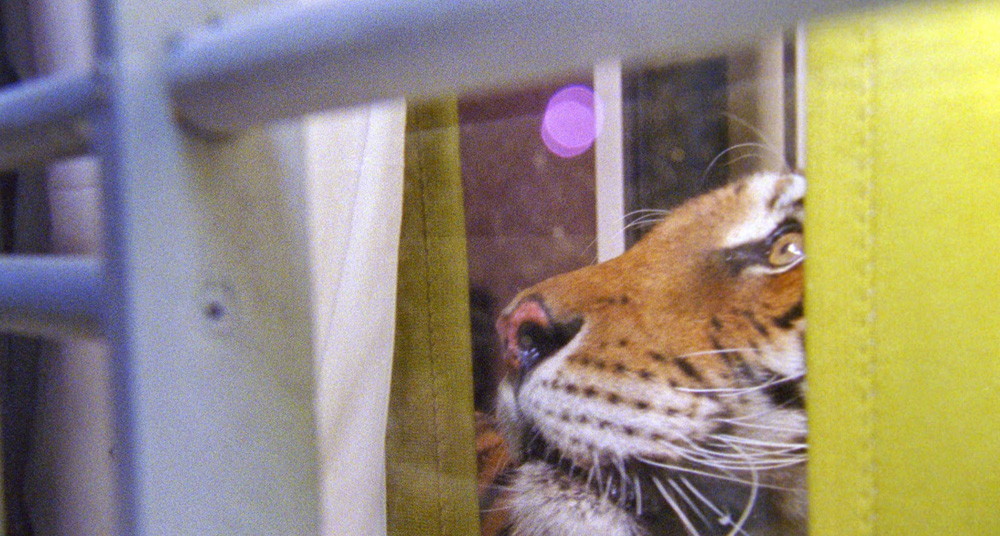
Phillip Warnell
Ming of Harlem: Twenty One Storeys in the Air
Documentary | | color | 70:0 | United Kingdom | 2014
Ming of Harlem: Twenty One Storeys in the Air is an only-in-New-York account of Ming, Al, and Antoine Yates, who cohabited in a high-rise social housing apartment at Drew-Hamilton complex in Harlem for several years until 2003, when news of their dwelling caused a public outcry and collective outpouring of disbelief. On the discovery that Ming was a 500-pound pound Tiger and Al a seven-foot alligator, their story took on an astonishing dimension. The film frames Yates’s recollections with a poetic study of Ming and Al, the predators’ presence combined with a text by philosopher Jean-Luc Nancy, reimagining the circumstances of the wild inside, animal names, strange territories, and human-animal relations.
Phillip Warnell is a filmmaker and academic based in London. He produces cinematic works exploring a range of philosophical ideas on human-animal relations and the poetics of bodily and life-world circumstances, where an interplay between film, politic and sensorium is played out. Augmented by interdisciplinary activities and partnership engagement, Warnell's recent output has involved an ongoing collaboration with philosopher and author Jean-Luc Nancy. His film work has screened internationally in festivals including: New York (NYFF, 2014); Vienna (Viennale, 2014); Marseille (FID, 2008, 09, 14); Amsterdam (IDFA, 2008, 14); Locarno (2012); Copenhagen (CPH-Dox, 2009, 14); Montreal (FNC, 2012, 14) and at curated screening programmes and exhibitions including Paris (Rencontres, 2008, 09, 12, 14); Sharjah Biennial (2013); Antwerp (Extra-City, 2014); Vienna (Fotogalerie, 2014); Tallinn (CCA, 2014). He has presented numerous performance-event works over an extended period, including at MACRO (Rome, 2004); ICA (London, 2006); Copenhagen (2009).
Catalogue : 2013I first saw the light | Experimental film | 16mm | color | 12:0 | United Kingdom | 2012
Phillip Warnell
I first saw the light
Experimental film | 16mm | color | 12:0 | United Kingdom | 2012
I first saw the light channels the vestige of Joseph Carey Merrick?s surviving output. Better known as The Elephant Man, he produced a two-page autobiography, sold to those attending a freak show in which he was displayed in victorian London. The inter-titled text is coupled with stark sequences of a model church he constructed, now sealed within a glass and ebony container, together forming the basis for this poignant, silent film. A reminder of Merrick?s profound humanity in the face of such extreme adversity, the film also serves as a footnote to David Lynch?s feature film, in which the model is employed as a central motif and metaphor for Merrick?s psychological and emotional fluctuations.
Phillip Warnell produces films channelling the circumstances, thoughts and character of extraordinary subjects. The work is concerned with the exploration of, and curiosity with, ideas around bodies and environments. Thinking through film, his work explores an extra-sensory, pre-scientific world, infused with invisible, supra-organic phenomena. The premise for his work locates the body as an axis or point of orientation, around which can be hosted a series of investigations and transformations, into both the human and animal corpus, its biology, psychology and chemistry. A filmmaker, academic and artist, Phillip Warnell presents his work in a range of contexts and guises: including live performance pieces, time-based work, image and text. His recent cinematic work has included ?The Girl with X-ray Eyes? and ?Outlandish: Strange Foreign Bodies?, made in collaboration with Jean-Luc Nancy. Recent presentations of his work include a solo exhibition at The South London Gallery, London (Sept, 2012); Locarno Film Festival (2012); FNC Montreal (2012), Loop Barcelona (2011); CPH-Dox (2010); FID Marseille (2009/8), with exhibitions at Matts Gallery, London (2005) and 300m3, Gothenburg (2008).
Catalogue : 2010Outlandish: étranges corps étrangers | Experimental doc. | 35mm | color | 20:0 | United Kingdom | 2009
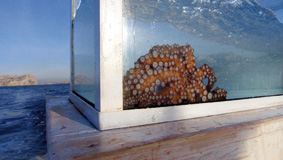
Phillip Warnell
Outlandish: étranges corps étrangers
Experimental doc. | 35mm | color | 20:0 | United Kingdom | 2009
Philosopher and heart transplant recipient Jean-Luc Nancy meditates on the history and integrity of bodies in Phillip Warnell?s new short 35mm film, Outlandish: Strange Foreign Bodies. A number of visual and literary passages explore the correlate between a textual narrative specially commissioned for the film, étranges corps étrangers, by Jean-Luc Nancy, his on screen presence, the surgical view of an organ in search of a body and an unaccounted for, displaced Cephalopod at sea. Presented in eight short episodes, together these form an odyssey on bodily migration. Outlandish is a journey threaded between shores and shared environments, the touching of and proximity between bodies, the vanishing and appearance of crew, the dimensions of the corpus and above all ? our relations with strange foreign bodies.
Phillip Warnell is an artist and filmmaker based in London. His work corresponds on a range of ideas concerning the desire for insight into the complex relations that constitute our bodies, the tension between the desire to get at and see the soul and the inherent elusiveness of this endeavour. The work traverses the boundaries of bodies, positioning them both as anatomical, physiological objects of research, and as intimate, distanced and transitional states. Whilst known especially for his keen attention towards notions of bodily transparency, embracing the combined use of historical artifacts with semiotics of the a-visual, his most recent output has assimilated more cinematic and textual imperatives, drawn from various collaborations and performative encounters. Recent exhibitions and screenings have included curated screenings at The BFI, London (08); festival screenings at FID Marseille (08 & 09), Copenhagen Documentary Festival (09); Bilbao Short Film Festival (08); DocBsAs, Buenos Aires (08). Exhibitions have included solo presentations at 300m3, Gothenburg; Leamington Spa Art Gallery, UK (both 2008); and a three-person exhibition at Matt?s Gallery, London (2005). Solo event/performances have included at MACRO, Rome (2006) and ICA, London (2006). He is currently Programme Director of Filmmaking at Kingston University, London.
Maya Watanabe
Catalogue : 2022Bullet | Video | 4k | color | 11:0 | Peru, Netherlands | 2021
Maya Watanabe
Bullet
Video | 4k | color | 11:0 | Peru, Netherlands | 2021
The surface of the skull is smooth as marble, except for the fractures surrounding a small, round bullet hole. The camera penetrates this opening, revealing the rock-like landscape within, of deep ravines, jagged-edged craters, and bony reefs. Here and there we see a web hanging, inhabited by a spider. Bullet records the skull of an unidentified body from the Peruvian violent period, which raged from 1980 to 2000 and took 70,000 lives. Since then, many remains have been found but cannot be identified and they still hover, as it were, under the status “NN” –“No Name.” The film tries to shed light on the forces that penetrate the lives of people: natural or social forces that overtake observation, the imagination and memory.Bullet constitutes an indictment of arbitrary executions and judicial vacuum in which they remain.
I am a visual artist and filmmaker who works with video installations. I have had recent exhibitions at, among other places: De Pont Museum (NL), MAXXI Museum (IT); MALI – Museo de Arte de Lima (PE); Rose Art Museum (US); La Casa Encendida (ES); Palais de Tokyo (FR); Kyoto Art Center (JP); Das Fridericianum (DE); and Matadero (ES). My work has been shown at various art biennials and internationally, including Videobrasil, the 13th Havana Biennial (CU), Asian Art Biennial (TW), the 2nd Wuzhen Contemporary Art Exhibition (CN) and the Beijing Biennial (CN). I have also collaborated as audiovisual art director for stage productions in Peru, Spain, Austria and Italy. In 2018, I was granted the Han Nefkens Foundation Award. I live in Amsterdam, where I teach at the Rietveld Academie. I am currently a PhD research student at the Department of Visual Cultures - Goldsmiths, University of London.
Catalogue : 2018Earthquakes | Experimental video | hdv | color | 12:0 | Peru, Japan | 2017
Maya Watanabe
Earthquakes
Experimental video | hdv | color | 12:0 | Peru, Japan | 2017
An unnatural landscape appears in an empty theater. Without any human action, a series of events begin to unleash. The motionless scene is abruptly interrupted by artificial disasters. When the scenography breaks down and the staged landscape collapses, the inhabitants confront their extintion. As the long-shot continues, the remnants left behind appear again, inexplicably recomposed. The fundamental motivation is to explore the limits, one’s own limits, ethical limits, political limits, of control over others deaths.
Maya Watanabe is a Peruvian visual artist who works with video installations. Her work has been exhibited at: Palais de Tokyo, Matadero Madrid, Kadist Art Foundation, Das Fridericianum, Museo de Arte Contemporáneo de Lima, and Kyoto Art Center among others. She has been featured in festivals like Videobrasil, LOOP, FILE, Transitio MX, Madrid Abierto, Havana Film Festival, and Beijing Biennale. She has also collaborated as a set designer and audiovisual art director for theatre plays performed in Peru, Spain, Austria and Italy. Watanabe is based between Amsterdam and Madrid.
Atsuhiko Watanabe
Catalogue : 2006Resonance of tears | Experimental film | betaSP | color | 11:0 | Japan, France | 2004
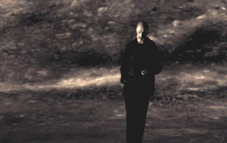
Atsuhiko Watanabe
Resonance of tears
Experimental film | betaSP | color | 11:0 | Japan, France | 2004
A cruel emptiness lies after a teardrop. Silence, filled by the resonance of tears. A man is wandering in this empty space. He sinks deeper and deeper into the memory of his dead family. Just before he lost his family, they saw together a play by Tchekhov, A Cherry Orchard, produced by Giorgio Strehrer, legendary Italian director. His monologue-dialogue around the theater brings him back into the imaginary stage of his own sadness.
Atsuhiko Watanabe is a Japanese filmmaker/video artist living in Paris. He graduated from Le Fresnoy, Studio National des Arts contemporains, where he made short films such as Aliénation (Locarno Festival 2003) and Resonance of tears (Rotterdam Festival 2005).
Marius Watz, @c
Catalogue : 2006INT.15/35 | Experimental video | dv | color | 2:0 | Norway | 2005

Marius Watz, @c
INT.15/35
Experimental video | dv | color | 2:0 | Norway | 2005
The video for @c`s piece "int.15/35" is a direct visualization of the music. The sound is electriconic, filled with high pitches and sudden attacks of static that stop as abruptly as they start. The video answers to this experience by using bright colors and sharp, pointy forms. Using FFT analysis to get the spectral characteristics of the sound, all the shapes in the video respond immediately to changes in the sound, so that they are perceived as one and the same.
Marius Watz is an artist who works with generative strategies for creating visual form, often employing a signature style of organic shapes and saturated colors. An autodidact, he realizes his pieces as software, creating work for a wide range of applications, from public space projections to live visuals for music.
Nico Joana Weber
Catalogue : 2021Tropic Telecom | Experimental video | 4k | color | 24:58 | Germany, France | 2020
Nico Joana Weber
Tropic Telecom
Experimental video | 4k | color | 24:58 | Germany, France | 2020
Tropic Telecom reflects contemporary Paris in its hybrid post-colonial reality. The film develops from the Palais de la Porte Dorée, which opened in 1931 on the occasion of the Paris Colonial Exhibition. It is the only building of the exhibition that was preserved after the end of the event, located in the southeast of the city bordering on the Périphérique. Its architectural style presents itself as a synthesis of the formerly modern Art Déco, as well as freely interpreted elements of native art and architectural styles. A crocodile basin is to be found in the still accessible aquarium of the palace that was used to showcase fish from the tropical colonies. As the film proceeds, an albino alligator that the basin houses today, embarks on a surreal journey. It leads the viewer through places of French colonial and migration history, as well as large brutalist and post-modern housing estates on the outskirts of Paris that were built from 1970 onwards and which stand for the residential utopia of a postcolonial Paris. A structure of images emerges that situates the ongoing aesthetic, political and social negotiation processes in a polyphonic communicative field.
Nico Joana Weber (*1983 in Bonn) lives and works in Ludwigshafen am Rhein, Germany. She studied Fine Art and Art History at Goldsmiths College London and completed her postgraduate studies at the Academy of Media Arts Cologne in 2013. By means of different artistic media such as video, installation, photography and drawing, she explores the aesthetic and political characteristics of architecture and landscape in transcultural contexts. Weber's work is fuelled by an unsteady search for historical traces and cultural processes of transformation and appropriation that doesn't arrive at simplistic solutions but rather focuses on zones of ambivalence. Nico Joana Weber has received numerous grants and awards, most notably the Villa Romana Prize (2016) and the Bonn Art Award (2019). Selected exhibitions and festivals include: Kunstmuseum, Bonn (2020), Kunstverein Kärnten, Klagenfurt (2019), Goethe Institute Bulgaria, Sofia (2019), Artothek, Cologne (2018), Temporary Gallery, Cologne (2017), Museum unter Tage, Bochum (2017), Skulpturenmuseum Glaskasten Marl (2017), Villa Romana, Florence (2016), Goethe Institute, Paris (2016), Aesthetica Short Film Festival, York (2015), International Short Film Festival Oberhausen (2015).
Apichatpong Weerasethakul, Christelle Lheureux
Apichatpong Weerasethakul
Catalogue : 2016Vapour | Experimental fiction | hdv | black and white | 21:0 | Thailand | 2015
Apichatpong Weerasethakul
Vapour
Experimental fiction | hdv | black and white | 21:0 | Thailand | 2015
“Vapour” se déroule dans le village de Toongha dans la région de Mae Ram en Thaïlande, où le réalisateur vit depuis plusieurs années. Les nuages descendent sur le village et l’engloutissent pour une journée. Ils touchent les tuiles, les lits, les chaises, les tapis, l’herbe, et les habitants, contaminant tout d’une vapeur blanche. Le village est en proie à des problèmes de gestion des terres et depuis près de soixante ans s’oppose au gouvernement thaïlandais.
Apichatong Weerasethakul, né à Bangkok en 1970, débute une carrière d`architecte avant d’obtenir un diplôme de cinéma au Art Institute de Chicago, en 1997. Ses travaux commencent à circuler dans le monde entier, dont «Mystérieux objet à midi», un premier long métrage expérimental en 2000 et le court «Boys at noon», la même année. En quelques années, il s’impose ainsi comme un des chefs de file de la scène expérimentale thailandaise. Parallèlement en 1999, Apichtapong Weerasethakul fonde «Kick the machine», une entreprise de promotion du cinéma expérimental et indépendant à travers le monde. En 2002, il présente à Cannes son premier long métrage de fiction, «Blissfully yours», considéré par de nombreux observateurs comme l’une des grandes révélations de cette édition. Suivra «Tropical Malady», en 2004. En 2005, Apichatpong a été consultant pour le projet Tsunami Digital Short Films, 13 films commissionnés par le Bureau pour l’Art contemporain et la Culture du ministère de la Culture thaïlandais. Ces films devaient rendre hommage aux victimes du tsunami et permettre aux artistes de réinterpréter ce tragique événement. Le film d’Apichatpong s’intitulait «Ghost of Asia», réalisé en collaboration avec l’artiste cinéaste française Christelle Lheureux. En 2008, il fait partie du jury cannois présidé par Sean Penn. En 2009, «Primitive Project» présenté parallèlement au musée d’art moderne de la ville de Paris et à Liverpool se remémore les affrontements sanglants à Nabua qui ont opposé civils et forces de l’ordre lors de la Guerre Froide, quand on tentait d’éradiquer toute trace de communisme chez les villageois. Dans les années 2000, il milite également contre la censure du cinéma en Thaïlande. Après avoir reçu le prix Un certain regard en 2002 pour «Blissfully Yours» et le prix du jury pour «Tropical Malady» en 2004, le cinéaste obtient la Palme d’or du Festival de Cannes 2010 pour son film «Oncle Boonmee, celui qui se souvient de ses vies antérieures».
Catalogue : 2013Ashes | Experimental doc. | hdv | color | 20:0 | Thailand | 2012
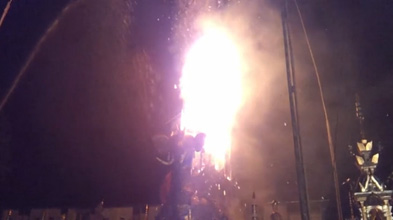
Apichatpong Weerasethakul
Ashes
Experimental doc. | hdv | color | 20:0 | Thailand | 2012
The idea, as Weerasethakul himself explained in the introduction, was to shoot something with a new camera that Mubi lend him. The result: an experimental film in the nicest sense of the word; that is, to integrate the camera in the shoot (and with it all the mishaps, ups and downs that it might find/create) instead of shooting against it; that is, trying to hide it and keeping it safe, which is the standard procedure in non-experimental cinema. He therefore joined forces with his new toy avoiding the common threat that looms over every filmmaker that wants to do something other than a purely mechanical film (a film-machine): namely, that his film may become so aesthetically thick that it will be inscrutable. The challenge and virtue of Ashes, as with Mekong Hotel, is to create a welcoming film. This has also been achieved because the colour and the shape of the film is by now familiar turf for us: different brush, same hand. A boy and a dog, a dusty path, youths in the countryside, a bonfire?; all pieces from his well-known scrapbook. In a way it is like a twenty-minute walk in a different corridor of the same cave that he used for his earlier project, called Primitive. Weerasethakul is a better balladeer than poet, and since poetry is almost the unavoidable soul in a film like this (which is anything but prose), that shows. His struggle to master the new tool is often a beautiful and enjoyable one, but he doesn´t win out entirely, and has to rely on a certain narrative, without which the film would eventually sink. And so we are told by the narrator that the first half of this film it´s a dream, a drawn one; film as mental image.
Apichatpong ?Joe? Weerasethakul (born July 16, 1970) is a Thai independent film director, screenwriter, and film producer.He has a degree in Architecture from Khon Kaen University and a Master of Fine Arts in Filmmaking from The School of the Art Institute of Chicago. He has been making films and videos since the early 90s. His feature films include Uncle Boonmee Who Can Recall His Past Lives, winner of the prestigious 2010 Cannes Film Festival Palme d?Or prize; Tropical Malady, which won a jury prize at the 2004 Cannes Film Festival; Blissfully Yours, which won the top prize in the Un Certain Regard program at the 2002 Cannes Film Festival; and Syndromes and a Century, which premiered at the 63rd Venice Film Festival and was the first Thai film to be entered in competition there. Themes reflected in his films include dreams, nature, sexuality (including his own homosexuality), and Western perceptions of Thailand and Asia, and his films display a preference for unconventional narrative structures (like placing titles/credits at the middle of a film). He is one of the few filmmakers in Thailand who have worked outside the strict Thai studio system. In his films, he experiments with certain elements found in the dramatic plot structure of Thai television and radio programs, comics and old films. He finds his inspiration in small towns around the country. In his work, he often uses non-professional actors and improvised dialogue in exploring the shifting boundaries between documentary and fiction.
Catalogue : 2010A Letter to Uncle Boonmee | Video | dv | color | 17:40 | Thailand | 2009
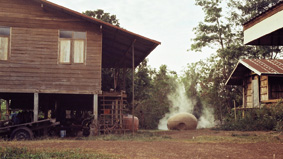
Apichatpong Weerasethakul
A Letter to Uncle Boonmee
Video | dv | color | 17:40 | Thailand | 2009
This short film is a personal letter describing my Nabua to Uncle Boonmee. The film comprises of shots of house interiors in the evening. The houses are all deserted except for one, where there is a group of young soldiers, played by some teens of Nabua. Two of them impersonate me by narrating the film: `Uncle... I have been here for a while. I would like to see a movie about your life. So I proposed a project about reincarnation. In my script there is a longan (fruit tree) farm surrounded by mountains. But here there are endless plains and rice fields. Last week I met a man who I thought was your son. But perhaps he was your nephew because he said his father was a policeman who owned hundreds of cows. Judging from the book I have, I don?t think you owned a lot of cows, and you were a teacher, weren?t you? The man was old and couldn?t remember his father?s name very well. It might be Boonmee or Boonma. It was a long time ago, he said. Here in Nabua there are several houses that I think are suitable for this short film for which I got funding from England. I don?t know what your house looked like. I cannot use the one in my script because it is so different from the ones here. Maybe some parts of these houses resemble yours. What was your view like? Was it like this? Soldiers once occupied this place. They killed and tortured the villagers until everyone fled into the jungle.` There is a soldier having dinner alone on the second floor. In a room nearby, there is a mysterious figure sleeping in a pink mosquito nest. The silence is interrupted by the sound of digging heard from the window. From one of the houses, there is a glimpse of a spaceship parked in the backyard. Something small is darting across the frame. In an empty room, the soldier is lying on the floor looking out of the window, preoccupied by his thoughts. In a forest, there is a black, ape-like creature walking among the trees. In one corner of the forest we see a model of a shabby house, a spirit house that no one cares for any longer. In front of a tree a cow stands, doing nothing. After a while, it walks away.
Apichatpong Weerasethakul
Apichatpong Weerasethakul
Catalogue : 2007Worldly desires | Experimental fiction | dv | color | 42:0 | Thailand | 2005
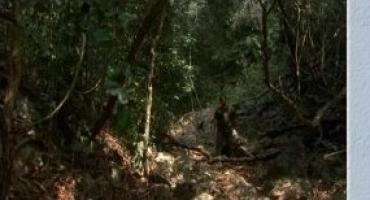
Apichatpong Weerasethakul
Worldly desires
Experimental fiction | dv | color | 42:0 | Thailand | 2005
True false musical comedy, false true making off, "Worldly Desires" aims to film a day in the life of filming in the depths of the Asian jungle, blending sung sequences whose duration destabilizes and intoxicates the spectator, from lascivious scenes to the mysterious ambiance. Here we find the themes of the Thai director's predilection, his taste for the romantic encounter, and his visceral attraction for the worrying strangeness of the tropical forest.
Born in 1970 in Bangkok, Apichatong Weerasethakul started with a career in architecture before obtaining a diploma in cinema from the Art Institute of Chicagi in 1997. His works started to circulate throughout the world, most notably "Mystérieux objet à midi", his first feature length film in 2000, and in the same year the short film "Boys at noon". In a few years he thus becomes one of the leaders of the Taiwanese experimental scene. In 1999 he founded Kick the machine, a business promoting experimental and independant cinema throughout the world. In 2002 il presented his first feature length fiction film, "Blissfully Yours" at Cannes, considered one of the largest revelations of this edition by numerous observers. "Tropical Malady" followed in 2004.
William Wegman
Liu Wei
Catalogue : 2011Weile Mingtian de Jiyi | Documentary | dv | color | 18:6 | China | 2010
Liu Wei
Weile Mingtian de Jiyi
Documentary | dv | color | 18:6 | China | 2010
This is a documentary about the armed violence in China during the Great Cultural Revolution. Traces are spread out from the only left ¡°Cultural Revolution Graveyard¡± in Chongqing, recollect the impact of the bygones to their life in the course of their growth, listen to their opinions and reflects to the historical disaster. Also raised the question of why such a tragedy had happened in China? For what reasons had they suffered from the tragedy? From the narrator¡¯s words, we seem to find some solutions, but far from enough. If we are indifferent to the disasters caused by the Cultural Revolution, never reflect about it, there might be possibilities more sufferings would happen, that we are reluctant to see it again.
Liu Wei was born in 1965, P. R. China, He An independent artist and filmmaker living and working in Beijing, Liu Wei graduated from the China Central Academy of Drama in 1992 and completed his studies in Philosophy at Beijing University in 1995. Liu Wei was represented in the `8th Gwangju Biennale-10,000 Lives`, 2010, and has participated in the `9th Sharjah Biennial`, 2009; ¡®International Media Art Biennale WRO¡¯, 2009, WRO Art Center; `Taipei Biennial`, 2008. Taipei Fine Arts Museum; `Thermocline of Art-New Asian Waves`, 2007, ZKM Center for Art and Media, Karlsruhe; ¡°La vid¨¦o, un art, une histoire 1965 ¨C 2007¡±, 2008, Mus¨¦e Fabre; ` City skin-Images Of the Contemporary Metropolis`, 2006, Shengzhen Museum of Art etc.
Catalogue : 2010Weile Wangque de Jinian | Documentary | dv | color | 12:50 | China | 2009
Liu Wei
Weile Wangque de Jinian
Documentary | dv | color | 12:50 | China | 2009
That is a memory of my sophomore year of 1989, the year when I almost got killed. I don¡¯t feel lucky for my survival, but a strong feeling of sadness for myself, because of my inability to do something in the face of the dead. Twenty years have passed. Mother¡¯s hair has turned gray; beloved ones have dried up the tears. Glorious as forever on this first street of China, silence prevails. Silence, forgetting and deliberate covering, people¡¯s memory turns into a vacuum. The bygones twisted into a blurred picture, true memory gone, illusion remains. that memory makes us more helpless as the time passes by. Remaining silent in the face of reality witnesses our hypocrisy and weakness. Silence, forgetting and deliberate covering, people¡¯s memory turns into a vacuum. The bygones twisted into a blurred picture, true memory gone, illusion remains.
Liu Wei is an independent artist living and working in Beijing. He graduated from the Department of Fine Arts of China Central Academy of Drama and completed his studies at the Symposium on the Relationship between Religion and Culture, hosted by the Beijing University. His works are closely related to personal experience and memory, as well as the reality and rapidly changing history of contemporary China. ¡°Memory¡± is the main subject for his creation of art works, for it connects history at one end while reality at the other end in the clue of memory. Therefore in his works we can find such kind of realistic significance. He¡¯s works have been exhibited at many art institutions internationally including at ZKM Center for Art and Media in Karlsruhe; the Centre Pompidou in Paris, Nasher Museum of Art in U.S, WRO Art Center in Poland, Mus¨¦e Fabre in Montpellier, Contemporary Art Centre of South Australia, Taipei Fine Art Museum, The Centre of Contemporary Art Palau de la Virreina in Barcelona, the Haus der Kulturen der Welt in Berlin and The Guangdong Museum of Art China etc.
Catalogue : 2009Wu Wang de Tu Di | Documentary | dv | color | 7:16 | China | 2008
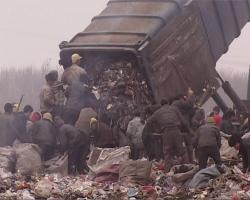
Liu Wei
Wu Wang de Tu Di
Documentary | dv | color | 7:16 | China | 2008
These junkmen in this photo are farmers living in suburban areas of Beijing who come to this refuse dump everyday to grub wastes and domestic garbage from urban households in exchange for meager income as supplement to their basic subsistence. Along with rapid economic development, the city of Beijing has been sprawling in all directions. On the one hand, the croplands are continuously shrinking but farming income remains unchanged. On the other hand, consumer demand is increasing despite of steadily growing consumer price. This situation has forced numerous farmers into a new dilemma and they have to find a new way out for subsistence While our mainstream media drums for urban development and prosperity, are we really aware that the urbanization process is destroying our environment and the way we live? Are those new skyscrapers and broader streets really the future we are pursuing?
Liu Wei,Born in 1965, P. R. China, He is an independent artist living and working in Beijing. In 1992 he graduated from the Department of Fine Arts, of China Central Academy of Drama and in 1995 completed his studies at the Symposium on the Relationship between Religion and Culture, hosted by the Philosophy Department of the Beijing University. Lui Wei has been engaged in the fields of video and photography for many years. His works are closely related to personal experience and memory, as well as the reality and rapidly changing history of contemporary China. He?s works have been exhibited at many art institutions internationally including at the Centre Pompidou, France; ZKM Center for Art and Media, Karlsruhe; The Guangdong Museum of Art, China; Nasher Museum of Art, U.S.; AdK - AKADEMIE DER KÜNSTE. Berlin;musée Fabre, France; The Centre of Contemporary Art Palau de la Virreina, Spain. Taipei Fine Art Museum and SESC Art Centre, Brazil etc.
Willoh S. Weiland
Catalogue : 2015FINALE | Video | hdv | color | 15:22 | Australia | 2013
Willoh S. Weiland
FINALE
Video | hdv | color | 15:22 | Australia | 2013
Finale is a short film that follows one man's journey to the silver screen, inspired by and starring un-sung local hero Evan Knoble alongside senior marching ladies, motorcycle clubs, community orchestras and primary school students. Finale merges the essence of a musical with contributions from a diverse range of local community groups located in the Mornington Peninsular of Victoria, Australia. The nostalgia associated with Drive In Cinemas unfolds alongside the local wild natural landscapes to create a journey of longing and commitment. Finale merges the surreal with wild natural landscapes to create a dark portrait of our longing for that one moment of fame. Finale was created by Aphids with its key artists collaboratively writing, creating and producing the work.
Aphids creates epic contemporary art projects using performance, music, site-specificity and new technologies. Collaborative and driven by a passionate belief in the social role of art, Aphids investigates what is current and urgent in contemporary culture. Aphids is led by Artistic Director Willoh S.Weiland in collaboration with Artistic Associates Martyn Coutts, Elizabeth Dunn, Tristan Meecham, Lara Thoms and Thea Baumann (Shanghai). Based in Melbourne, Australia, Aphids has created and presented collaborations across Europe and in Japan, China, South Africa, USA, Mexico and Australia. Current projects include the large scale Forever Now inspired by the Golden Record sent into space in 1977 on the Voyager Space Probe.
Wolfgang Weileder
Catalogue : 2006House-Birmingham | Experimental doc. | dv | color | 9:42 | Germany, United Kingdom | 2005
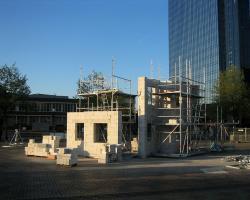
Wolfgang Weileder
House-Birmingham
Experimental doc. | dv | color | 9:42 | Germany, United Kingdom | 2005
Over a period of twelve-days two groups of builders simultaneously constructed and deconstructed a series of house shells reminiscent of two interlocking terraces. Five metres high, they were juxtaposed via a rotational symmetry and built from lightweight cellular concrete blocks, involving a new fast-bonding dry-assembly construction technique. The process had been synchronized so that the construction and de-construction was choreographed sequentially: The opposite segments of the two terraces slowly moved around each other until house-birmingham was completed. Two separate terrace structures had been built in the same place at the same time. House-birmingham was recorded using time-lapse camera. The camera moved around the installation clockwise on a circular track. After 12 days it reached its staring point again. House-birmingham explores the relationship between the temporary and the permanent in architecture as well as investigating the boundaries between process, artwork and documentation.
Wolfgang Weileder is an artist working with large-scale sculptures and installations in a variety of material and media. Located in the architectural and urban context, his site-specific work incorporates new uses of temporary and socially interactive art practice. Recent projects include house-birmingham, a time-based site-specific sculpture and movie commissioned by IKON Gallery, Birmingham, UK. Since 2000 Wolfgang Weileder lives in Newcastle upon Tyne, UK, where he is a Reader in Contemporary Sculpture Practice at the University of Newcastle.
Lawrence Weiner
Catalogue : 2009Around the Park | Art vidéo | dv | color | 7:26 | USA | 2007
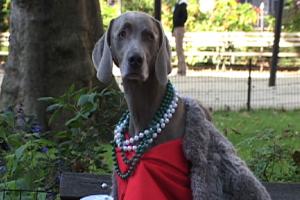
William Wegman
Around the Park
Art vidéo | dv | color | 7:26 | USA | 2007
Around the Park was a public art project commissioned by the Madison Square Park Conservency in New York in autumn 2007. The video, which stars Wegman`s canine cast enjoying a fall day in the park, was presented on four outdoor monitors near Madison Square Park`s food kiosk. Commissioned by the Madison Square Park Conservatory. Director: William Wegman. Camera: Andrea Beeman. Crew: Jason Burch, Ben Dowell, Marlo Kovach, Sara Fuller. Starring: Bobbin, Candy, Penny. Hands: Jason Burch, Marlo Kovach, Katie Williams. Cameo Appearances: Molly Burch, Lola Wegman, William Wegman. Editor: Andrea Beeman. Additional Sound Editing: Ben Tudhope. Online Editor: George Englezos. Special Thanks: Stewart Desmond, Debbie Landau, Kim Wicker.
William Wegman has gained international recognition for his work in photography, painting, drawing and video. A postmodern, conceptual humorist, he has been termed a "master of whimsy, whose [works] have a charm and absurdist intelligence sometimes worthy of Beckett," by The New Yorker. Although Wegman is best well known for his witty portraits of his Weimeraner dogs, he is a highly original figure in the history of video art. His comedic, performance-based tapes of the 1970s are among the most enduring of video classics. Wegman`s early video works, many of which star his famous Weimeraner and alter ego, the late Man Ray, use understated humor, minimalist performance and the immediacy and intimacy of low-tech video to create brilliant moments of idiosyncratic narrative comedy. Recorded as single takes in real time, performed in front of a static camera, his tapes document absurdist anecdotes, droll monologues and surreal sight gags. With subversive wit, Wegman ingeniously employs minimal props, his own body and everyday situations as comedic material, delivering monologues in a wry deadpan. The dog Man Ray, a hapless innocent, functions as an unlikely protagonist, a comic foil and "straight man" for Wegman`s fictions. Obedient and trusting, Man Ray is a blank slate upon which Wegman projects and transfers an outrageous psychology of human emotions and motivations. In situational one-liners, Man Ray is provoked into conditioned reactions; Wegman then ascribes anecdotal meaning to the dog`s behavior, imposing human traits onto this Other. In one of his most engaging works with Man Ray, the dog appears to respond with consternation when Wegman corrects his spelling lesson; in another, two dogs follow the movements of an off-screen object in perfect unison. The transference of identity from Wegman to Man Ray is central to the tapes` comic tension. Much of the humor derives from the incongruity of what one sees and what one hears, and the meanings assigned to them ? the ironic gap between anticipated and actual behavior, expectations and actuality. Many of the works involve sight gags that parody minimalist and body art practices; body parts and other inanimate objects assume human voices. Television monologues are rendered as absurdist confessionals; extended actions end in hopelessly anticlimactic climaxes. Historically significant and extremely influential, these tapes are also genuinely funny. Since the late 1970s Wegman has received international acclaim for his work in photography, much of which features anecdotal images of Man Ray and his canine successor, Fay Ray. Fay Ray is also the star of Wegman`s later video works, which include a series of comic vignettes for television`s Sesame Street. Wegman was born in 1943. He received a B.F.A. in painting from the Massachusetts College of Art and an M.F.A. in painting from the University of Illinois, Urbana. He has received numerous awards, including grants and fellowships from the Guggenheim Foundation, the National Endowment for the Arts, and Creative Artists Public Service (CAPS). Wegman`s photographs have been the subject of several publications, including Man`s Best Friend (1982) and William Wegman: Paintings, Drawings, Photographs, Videotapes (1990). His photographs, paintings, drawings and videotapes have been exhibited widely throughout the United States and Europe, in major one-man shows at institutions including the Walker Art Center, Minneapolis; Los Angeles County Museum of Art; Holly Solomon Gallery, New York; Kunstmuseum, Lucerne; Centre Georges Pompidou, Paris; Stedelijk Museum, Amsterdam; Kunstverein, Frankfurt; and the Institute of Contemporary Art, London. Wegman`s work has also been seen in group exhibitions at festivals and institutions including several Documentas, Kassel, Germany; Whitney Museum of American Art Biennial; Kunsthalle Wien, Vienna; San Francisco Museum of Modern Art; Venice Biennale; The Museum of Modern Art, New York; Institute of Contemporary Photography, New York; the Victoria and Albert Museum, London, and Creative Time`s Video Art on the Times Square Astrovision in New York. His work was the subject of a 1990-91 travelling retrospective, William Wegman: Paintings, Drawings, Photographs, Videotapes 1970-1990, which originated at the Kunstmuseum, Lucerne. His videotapes have been broadcast in the United States and abroad, and have been shown nationally on The Tonight Show, The David Letterman Show, and Saturday Night Live. Funney/Strange, a retrospective of Wegman`s work, was organized by the Addison Gallery of American Art, Phillips Academy, Andover, Massachusetts, in 2006, with a catalogue published by Yale University Press. The retrospective toured to numerous sites, including the Brooklyn Museum of Art and the Wexner Center for the Arts, Columbus, Ohio. Wegman lives in New York.
Catalogue : 2009Turning Some Pages | Art vidéo | 0 | color | 5:0 | USA | 2007
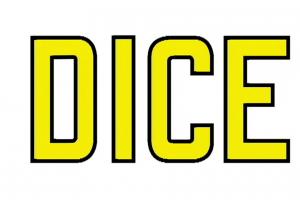
Lawrence Weiner
Turning Some Pages
Art vidéo | 0 | color | 5:0 | USA | 2007
Turning Some Pages was produced in conjunction with the printing of a limited edition journal of the same name by the Howard Smith Paper Group, a British paper merchant. The action of reading a book informs the structure of this motion drawing. Abstract arrangements of shapes and images of dice are interspersed with cryptic aphorisms ("With the addition of explicit meaning, the implicit sense of the throw of the dice becomes clear"); arrows suggest the turning of a page. Weiner adds another layer of complexity and enigma by repurposing his droll 1981 audio work Where It Came From as a soundtrack. Accompanied by Roma Baran on the piano, Weiner matter-of-factly explains: "Art is not a metaphor upon the relationship of human beings to objects and objects to objects in relation to human beings, but a representation of an empirical existing fact." A Structure of Lawrence Weiner. Voice: Lawrence Weiner. Piano: Roma Baran. Computer Graphics: Bethany Izard. A Production of Moved Pictures.
A key figure in Conceptual Art, Lawrence Weiner has long pursued inquiries into language and the art-making process. From his pioneering installation works of the 1960s and `70s through his new digital projects, Weiner posits a radical redefinition of the artist/viewer relationship and the very nature of the artwork. Translating his investigations into linguistic structures and visual systems across varied formats and manifestations, Weiner has also produced books, films, videos, performances and audio works. In his recent series of digital works, Weiner stakes out new territory even as he extends these investigations. Evoking analytic philosophy and linguistic games, Weiner deploys animated drawings and epigrammatic text that interact in a symbolic language. Ultimately, these visual and linguistic systems take on provocative narrative meaning. Lawrence Weiner was born in the Bronx, New York, in 1942. He has received numerous grants and awards, including the Skowhegan Medal for Painting/Conceptual Art; Wolfgang Hahn Prize, Ludwig Museum, Cologne, Germany; the John Simon Guggenheim Fellowship, and the National Endowment for the Arts Fellowship, among many others. Weiner`s works have been widely exhibited internationally. Recent solo exhibitions have been seen at the Kunstmuseum Wolfsburg, Germany; Hirshhorn Museum and Sculpture Garden, Washington, D.C.; Institute of Contemporary Art, London; Dia Center for the Arts, New York; Musée d`Art Contemporain, Bordeaux; San Francisco Museum of Modern Art; Walker Art Center, Minneapolis; Philadelphia Museum of Art, and Museum Ludwig, Cologne, Germany. His work has been included in major group exhibitions internationally, including Documenta in Kassel, Germany, and the Venice Biennial. In 2007-2008, Weiner was honored with a 40-year retrospective of his work, entitled Lawrence Weiner: AS FAR AS THE EYE CAN SEE at the Whitney Museum of American Art in New York. Weiner lives and works in New York.
Laurence Weiner
Catalogue : 2008Inherent in the rhumb line | Experimental video | dv | color | 7:0 | USA | 2005

Laurence Weiner
Inherent in the rhumb line
Experimental video | dv | color | 7:0 | USA | 2005
"With the advent of the rhumb line - a line of constant bearing or loxodrome - a cognitive pattern developed in the Western world that allowed the possibility to conceive pillage on voyages of discovery. Inherent in the Rhumb Line is an imperative for use - regardless of consequence - a flattened convolution that marries landscape with loot and preordination. Inherent in the Rhumb Line is a silent 7 minute motion drawing." -- Moved Pictures
A key figure in Conceptual Art, Lawrence Weiner has long pursued inquiries into language and the art-making process. From his pioneering installation works of the 1960s and `70s through his new digital projects, Weiner posits a radical redefinition of the artist/viewer relationship and the very nature of the artwork. Translating his investigations into linguistic structures and visual systems across varied formats and manifestations, Weiner has also produced books, films, videos, performances and audio works. In his recent series of digital works, Weiner stakes out new territory even as he extends these investigations. Evoking analytic philosophy and linguistic games, Weiner deploys animated drawings and epigrammatic text that interact in a symbolic language. Ultimately, these visual and linguistic systems take on provocative narrative meaning. Lawrence Weiner was born in the Bronx, New York, in 1942. He has received numerous grants and awards, including the Skowhegan Medal for Painting/Conceptual Art; Wolfgang Hahn Prize, Ludwig Museum, Cologne, Germany; the John Simon Guggenheim Fellowship, and the National Endowment for the Arts Fellowship, among many others. Weiner`s works have been widely exhibited internationally. Recent solo exhibitions have been seen at the Kunstmuseum Wolfsburg, Germany; Hirshhorn Museum and Sculpture Garden, Washington, D.C.; Institute of Contemporary Art, London; Dia Center for the Arts, New York; Musée d?Art Contemporain, Bordeaux; San Francisco Museum of Modern Art; Walker Art Center, Minneapolis; Philadelphia Museum of Art, and Museum Ludwig, Cologne, Germany. His work has been included in major group exhibitions internationally, including Documenta in Kassel, Germany, and the Venice Biennial. Weiner lives and works in New York.
Immanuel Weinland
Catalogue : 2007Green Sky | Video installation | dv | color | 10:40 | Germany | 2006

Immanuel Weinland
Green Sky
Video installation | dv | color | 10:40 | Germany | 2006
The belief in the apocalypse is part of the Christian faith and western culture. Politics, church and media are all part of it. Is our imagination of the apocalypse only a projection of what we see every day? "Green Sky" was recorded on New Year's Eve 2005/2006 at Ramstein Air Base, which is the headquarters of the American Air Force in Europe. The original material was cut into 60 pieces and rearranged. The sound in the film is a modification of George W. Bush saying the word "Terror", stretched over 10 minutes.
Pablo Wendel
Catalogue : 2008Terracotta Warrior | Art vidéo | dv | color | 8:38 | Germany, China | 2006
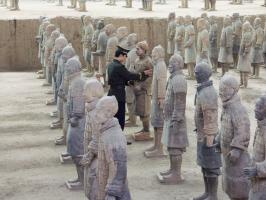
Pablo Wendel
Terracotta Warrior
Art vidéo | dv | color | 8:38 | Germany, China | 2006
Terracotta Warrior: Video | 8´38´´min. 16. September 2006 Während meines Studienaufenthalts als Stipendiat an der China National Academy of Fine Arts, Hangzhou CHINA (2006), bereitete ich die Intervention Terracotta Warrior in der Nähe der nordchinesischen historischen Stadt Xi?an vor. Mit einem selbst angefertigten Kostüm kopierte ich einen Infanteriesoldaten der ca. 2200 Jahre alten Terrakotta-Armee. In dieser Verkleidung schmuggelte ich mich vorerst unbemerkt unter die Tausenden von individuell ausgearbeiteten Tonsoldaten. Als Skulptur versteinerte ich in einer statuarischen Haltung, ohne sie trotz Aufforderung aufzugeben. Die Performance dauerte 23 min., nach ca.7-10 min wurde ich erst von einem Touristen entdeckt und verraten. Besonders interessierte mich hierbei auch die Situation, dass eine der ältesten Armeen der Welt von einer der größten gegenwärtigen, der chinesischen, bewacht wird. In der Vorbereitung recherchierte ich sehr genau, so habe ich z.B. die Schuhe so täuschend echt nachgearbeitet, dass das original Schuhprofil noch heute im Staub des Museumsbodens von Xi?an als Fußabdruck eines Terrakotta-Kriegers zu sehen ist. Einer möglichen Bestrafung oder Ausweisung entging ich. Die Behörden verstanden, dass ich keinem destruktiven Impuls, sondern meiner Liebe zur Terrakotta-Armee gefolgt bin.
Am 01.09.1980 wurde ich als ältester Sohn in Tieringen, Deutschland, geboren. Von 1999 bis 2002 absolvierte ich eine Steinmetz- und Bildhauerausbildung. Nach abgeschlossener Ausbildung zum Steinbildhauer begann ich im Wintersemester 2002 das Studium der Bildhauerei an der Staatlichen Akademie der Bildenden Künste in Stuttgart bei Werner Pokorny, Udo Koch und Alexandra Ranner. Während dem Hauptstudium wechselte ich in die Fachklasse für Performance und Video von Christian Jankowski. Durch das Baden-Württemberg-Stipendium studierte ich 2006 an der China National Academy of Fine Arts, Hangzhou/China, für ein Semester. Seit 2007 bin ich als Stipendiat in das Förderprogramm der Studienstiftung des deutschen Volkes aufgenommen.
Frank Werner
Catalogue : 2006Survival training- ballet | Art vidéo | dv | color | 1:0 | Germany | 2005
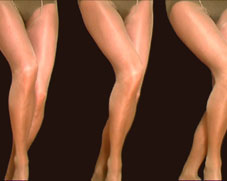
Frank Werner
Survival training- ballet
Art vidéo | dv | color | 1:0 | Germany | 2005
Everything is self-made
Carte Blanche Werner Schroeter
Catalogue : 2010Winter Soldier | Documentary | 16mm | color and b&w | 96:0 | Germany, USA | 1972
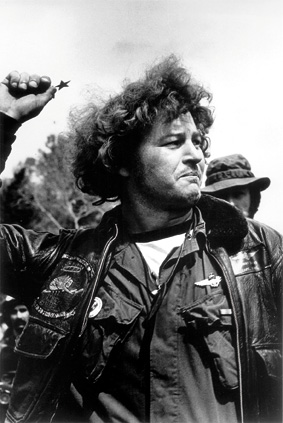
Carte Blanche Werner Schroeter
Winter Soldier
Documentary | 16mm | color and b&w | 96:0 | Germany, USA | 1972
"Winter Soldier" a été réalisé par un collectif anonyme de cinéastes qui a rassemblé cent neuf "anciens" soldats de la guerre du Vietnam dans un hôtel de Détroit du 31 janvier au 2 février 1971, à l`instigation de l`association Vietnam Veterans Against the War. "Winter Soldier" ne comporte ni commentaire ni effet de montage qui dramatise l'image de manière exagérée, mais l`abondance des témoignages est telle que sa vision ne laisse pas le spectateur indemne. Viols, fusillades en masse, corps jetés d`avion dans la mer, prisonniers découpés vivants ou décapités "pour l`exemple"? ce sont tout autant les faits que leur nombre, leur cruauté et le visage angélique de leurs agents qui terrifient. D`où le refus des cinémas (à l`exception d`une salle new-yorkaise) de projeter "Winter Soldier" à sa sortie en 1972. Mais ce qui frappe surtout dans "Winter Soldier", c`est le contraste entre les atrocités que ces soldats d`une vingtaine d`années ont commises un ou deux ans auparavant, avec leur maturité, leur liberté verbale et leur sens de l`urgence politique. Il semble que, toute honte bue, ils aient à l`esprit la nécessité, alors que la guerre bat encore son plein, de rendre leur témoignage utile, et pour cela, de ne pas l`expurger. Winter Soldier, plutôt que de multiplier les témoins, s`attache à une poignée de visages marquants - ceux des plus prolixes et des plus lucides sans doute - qui prennent corps comme personnages, doués d`une profondeur humaine qui dépasse de loin celle des fictions à la Voyage au bout de l`enfer. Le film donne aussi une idée de la disparité ethnique et sociale d`une Amérique dans laquelle, comme le rappelle un Noir dans l`auditoire, "après le lycée, nous [Afro-américains] n`avons pas d`autre choix que d`entrer dans l`armée, sinon on finit à la rue". Ce moment d`intense concentration des locuteurs mais aussi des journalistes de l`assistance offre à la fois un portrait en coupe de la moitié d`une génération qui n`a pu qu`entendre parler de Woodstock depuis "là-bas", et l`occasion du retour d`un pays sur son Histoire : un Indien d`Amérique n`y rappelle-t-il pas, les larmes aux yeux, que les contrats de cession des terres des Indiens rédigés par les colons stipulaient "Tant que poussera l`herbe, tant que couleront les rivières", et qu`au Vietnam, l`herbe ne poussera plus à l`endroit des centaines de villages réduits en cendres ?
Elsa Werth
Catalogue : 2014un triangle dangereux | Experimental fiction | hdv | color | 4:30 | France | 2013
Elsa Werth
un triangle dangereux
Experimental fiction | hdv | color | 4:30 | France | 2013
Mise en place d?une stratégie guerrière factice. Jeux de samouraïs avec comme décor une ville de province française et un club de free-fight. Dans la vidéo « Un triangle dangereux » l?attention est portée à l?image que donnent d?eux mêmes des amateurs de free-fight, imprégnés par la culture des jeux vidéo et des films d?action. Ils posent, s?observent, se photographient, se filment. Ces images en mouvements sont rythmées par des plans fixes qui leur confèrent un caractère pictural. Les personnages sont piégés dans un récit qui ne démarrera pas, qui les restreint à faire de la figuration.
Elsa Werth née en 1985, vit et travaille à Paris. Elle est diplômée de l?Ecole Nationale Supérieure des Arts Décoratifs de Paris en 2009 et diplômée de l?Ecole Nationale Supérieure des Beaux-Arts de Paris en 2013. Elle est lauréate du prix Humankind Léo Burnett en 2013. Elle développe parallèlement un travail de vidéo et de sculpture. Elle assure actuellement le commissariat d?un cycle d?expositions qui aura lieu du 15 mars au 29 mai à Paris. Elle prépare un nouveau film. www.elsawerth.net
Marcel Wesdorp
Catalogue : 2013Out of Nothing | Création numérique | hdv | black and white | 125:0 | Netherlands | 2010
Marcel Wesdorp
Out of Nothing
Création numérique | hdv | black and white | 125:0 | Netherlands | 2010
The digital film-animation Out of Nothing is the third movie from the project I Wish I Couldn`t Lie / Out of Nothing witch I Started In Spring 2005. With the aid of digital technique, topography and 3D software I build a virtual Landscape. This landscape is a result of calculations, nowhere higher than 300 meters and where all shades of green have been translated into a grey scale. Time and emptiness takes an important role in the work. Out of Nothing portraying a landscape that in surface does measures 10 kilometers square but never the less is physically inaccessible. The illusion in Out of Nothing is being emphasized by a faint heartbeat that resonates through the space. There are no humans, animals, trees or bushes within the landscape. It is reminiscent of a tundra or steppe emphasizing the insignificance and temporality of men. I`m fascinated by how we experience time. A short stroll can seem to last for long while in reality only a short time has passed. The reversal also holds true. The way we experience time does not necessarily rhyme with reality or the conventions of calculating time by means of mechanics. Out of Nothing has a duration of 2 hour and 5 minutes. I Wish I Couldn`t Lie, the first movie in this triology has a duration of 4 hour an 43 minutes with no sound in it.
Marcel Wesdorp (Rotterdam, 1965) lives and works in Schiedam, the Netherlands He studied at the Graphic Lyceum and at the Academy of Art in Rotterdam. He also followed the advanced programme in photography at the St Joost Academy of Art and Design in Breda. Wesdorp makes film animations, maps and prints of digitally designed landscapes. As a viewer, you can hardly believe that the landscape you are looking at is only a virtual one. Although, in the case of Out of Nothing, it has a calculated surface area of ten kilometres by ten, the landscape cannot be entered. The illusion is reinforced by a soft heartbeat that is heard in the space. Wesdorp is fascinated by the idea of time that humans have. A walk can feel like it has lasted for hours although only a short time has actually elapsed. What happens in our heads is often not aligned to what is happening in reality, or to the common method of time measurement. The visual stroll through the virtual landscape approaches that experience. The Out of Nothing film animation is a landscape resulting from a calculation. It offers a hilly landscape that is not higher than three hundred metres, where green tints have been converted to grey. There are no people, animals, trees or bushes in the landscape. It is a tundra or steppe that emphasizes the insignificance and loneliness of humankind.